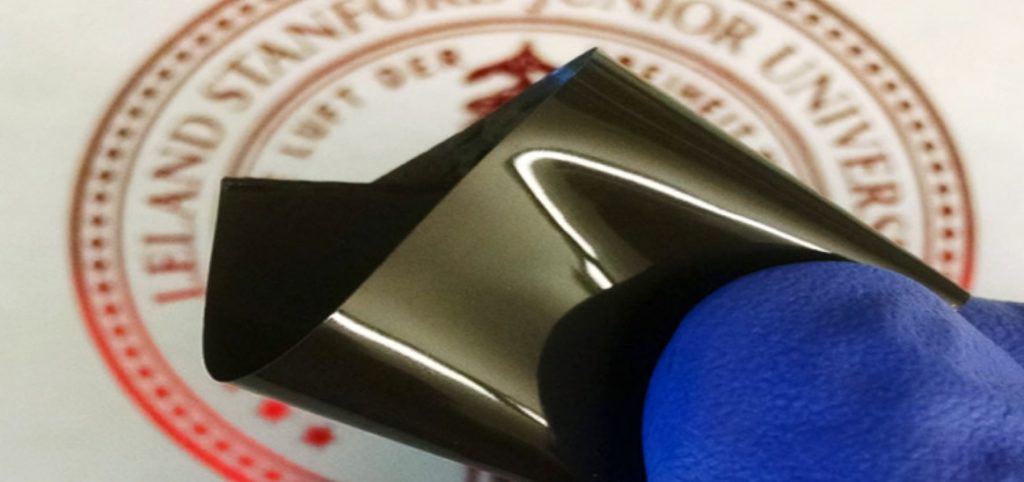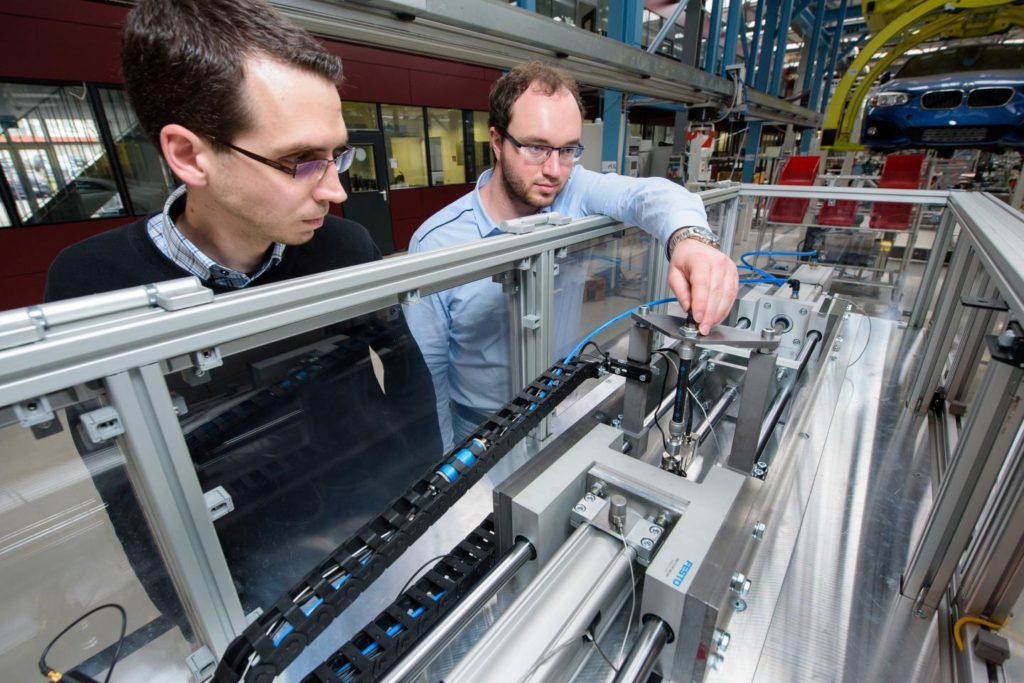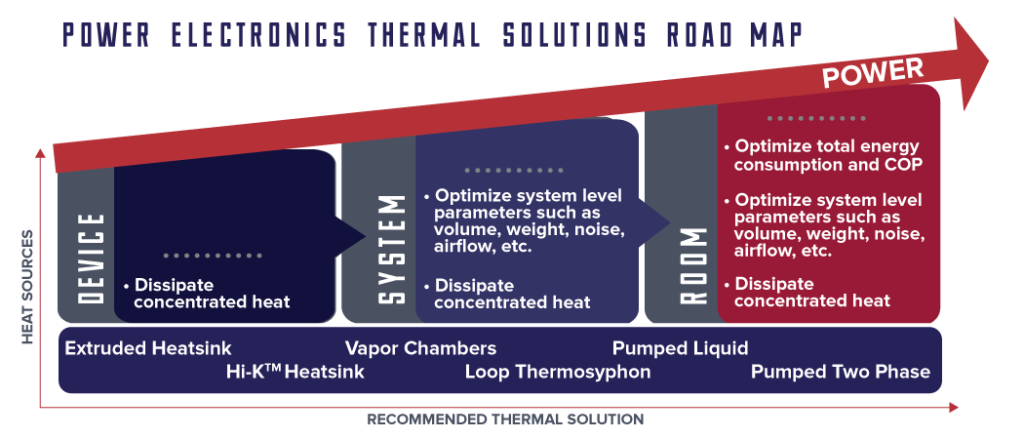
Stanford University researchers have developed a lithium-ion battery that shuts down before overheating. Source: Stanford University
Overheating can become a severe problem for robots. Excessive temperatures can damage internal systems or, in the most extreme cases, cause fires. Commercial robots that regularly get too hot can also cost precious time, as operators are forced to shut down and restart the machines during a given shift.
Fortunately, robotics designers have several options for keeping industrial robots cool and enabling workflows to progress smoothly. Here are four examples of technologies that could keep robots at the right temperature.
1. Lithium-ion batteries that automatically shut off and restart
Many robots, especially mobile platforms for factories or warehouses, have lithium-ion battery packs. Such batteries are popular and widely available, but they’re also prone to overheating and potentially exploding.
Researchers at Stanford University engineered a battery with a special coating that stops it from conducting electricity if it gets too hot. As the heat level climbed, the layer expanded, causing a functional change that made the battery itself no longer conducive. However, once cool, it starts providing power as usual.
The research team did not specifically test their battery coating in robots powered by lithium-ion batteries. However, it noted that the work has practical merit for a variety of use cases due to how it’s possible to change the heat level that causes the battery to shut down.
For example, if a robot has extremely sensitive internal parts, users would likely want it to shut down at a lower temperature than when using it in a more tolerant machine.
2. Sensors that measure a robot’s ‘health’ to avoid overheating
Commercial robots often allow corporations to achieve higher, more consistent performance levels than would be possible with human effort alone. Industrial-grade robots don’t need rest breaks, but unlike humans who might speak up if they feel unwell and can’t complete a shift, robots can’t necessarily notify operators that something’s wrong.
However, University of Saarland researchers have devised a method that subjects industrial machines to the equivalent of a continuous medical checkup. Similar to how consumer health trackers measure things like a person’s heart rate and activity levels and give them opportunities to share these metrics with a physician, a team aims to do the same with industrial machinery.

A research team at Saarland University has developed an early warning system for industrial assembly, handling, and packaging processes. Research assistants Nikolai Helwig (left) and Tizian Schneider test the smart condition monitoring system on an electromechanical cylinder. Credit: Oliver Dietze, Saarland University
It should be possible to see numerous warning signs before a robot gets too hot. The scientists explained that they use special sensors that fit inside the machines and can interact with one another as well as a robot’s existing process sensors. The sensors collect baseline data. They can also recognize patterns that could indicate a failing part — such as that the machine gets hot after only a few minutes of operating.
That means the sensors could warn plant operators of immediate issues, like when a robot requires an emergency shutdown because of overheating. It could also help managers understand if certain processes make the robots more likely to overheat than others. Thanks to the constant data these sensors provide, human workers overseeing the robots should have the knowledge they need to intervene before a catastrophe occurs.
Manufacturers already use predictive analytics to determine when to perform maintenance. This approach could provide even more benefits because it goes beyond maintenance alerts and warns if robots stray from their usual operating conditions due because of overheating or other reasons that need further investigation.
3. Thermally conductive rubber
When engineers design robots or work in the power electronics sector, heat dissipation technologies are almost always among the things to consider before the product becomes functional. For example, even in a device that’s 95% efficient, the remaining 5% gets converted into heat that needs to escape.

Source: Advanced Cooling Technologies
Pumped liquid, extruded heatsinks, and vapor chambers are some of the available methods for keeping power electronics cool. Returning to commercial robotics specifically, Carnegie Mellon University scientists have developed a material that aids in heat management for soft robots. They said their creation — nicknamed “thubber” — combines elasticity with high heat conductivity.

A nano-CT scan of “thubber” showing the liquid-metal microdroplets inside the rubber material. Source: Carnegie Mellon University
The material stretches to more than six times its initial length, and that’s impressive in itself. However, the CMIU researchers also mentioned that the blend of high heat conductivity and the flexibility of the material are crucial for facilitating dissipation. They pointed out that past technologies required attaching high-powered devices to inflexible mounts, but they now envision creating these from the thubber.
Then, the respective devices, whether bendable robots or folding electronics, could be more versatile and stay cool as they function.
4. Liquid cooling and fan systems
Many of the cooling technologies used in industrial robots happen internally, so users don’t see them working, but they know everything is functioning as it should since the machine stays at a desirable temperature. Plus, there are some robots for which heat reduction is exceptionally important due to the tasks they assume. Firefighting robots are prime examples.
One of them, called Colossus, recently helped put out the Notre Dame fire in Paris. It has an onboard smoke ventilation system that likely has a heat-management component, too. Purchasers can also pay more to get a smoke-extracting fan. It’s an example of a mobile robot that uses lithium-ion batteries, making it a potential candidate for the first technology on the list.
There’s another firefighting robot called the Thermite, and it uses both water and fans to stay cool. For example, the robot can pump out 500 gallons of water per minute to control a blaze, but a portion of that liquid goes through the machine’s internal “veins” first to keep it from overheating.
In addition, part of Thermite converts into a sprinkler system, and onboard fans help recycle the associated mist and cool the machine’s components.
An array of overheating options
Robots are increasingly tackling jobs that are too dangerous for humans. As these examples show, they’re up to the task as long as the engineers working to develop those robots remain aware of internal cooling needs during the design phase.
This list shows that engineers aren’t afraid to pursue creative solutions as they look for ways to avoid overheating. Although many of the technologies described here are not yet available for people to purchase, it’s worthwhile for developers to stay abreast of the ongoing work. The attempts seem promising, and even cooling efforts that aren’t ready for mainstream use could lead to overall progress.
The post 4 Overheating solutions for commercial robotics appeared first on The Robot Report.